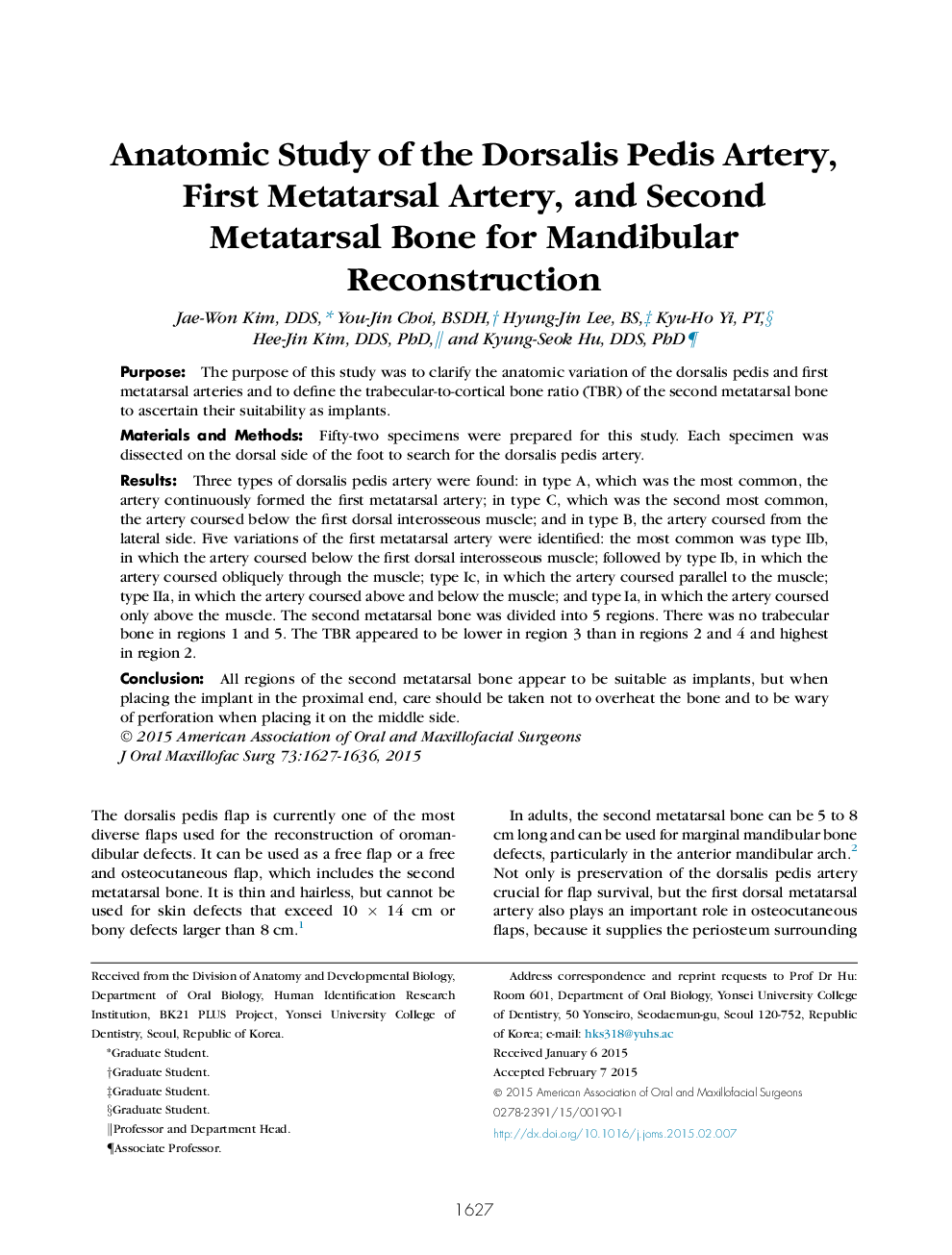| Article ID | Journal | Published Year | Pages | File Type |
|---|---|---|---|---|
| 3152338 | Journal of Oral and Maxillofacial Surgery | 2015 | 10 Pages |
PurposeThe purpose of this study was to clarify the anatomic variation of the dorsalis pedis and first metatarsal arteries and to define the trabecular-to-cortical bone ratio (TBR) of the second metatarsal bone to ascertain their suitability as implants.Materials and MethodsFifty-two specimens were prepared for this study. Each specimen was dissected on the dorsal side of the foot to search for the dorsalis pedis artery.ResultsThree types of dorsalis pedis artery were found: in type A, which was the most common, the artery continuously formed the first metatarsal artery; in type C, which was the second most common, the artery coursed below the first dorsal interosseous muscle; and in type B, the artery coursed from the lateral side. Five variations of the first metatarsal artery were identified: the most common was type IIb, in which the artery coursed below the first dorsal interosseous muscle; followed by type Ib, in which the artery coursed obliquely through the muscle; type Ic, in which the artery coursed parallel to the muscle; type IIa, in which the artery coursed above and below the muscle; and type Ia, in which the artery coursed only above the muscle. The second metatarsal bone was divided into 5 regions. There was no trabecular bone in regions 1 and 5. The TBR appeared to be lower in region 3 than in regions 2 and 4 and highest in region 2.ConclusionAll regions of the second metatarsal bone appear to be suitable as implants, but when placing the implant in the proximal end, care should be taken not to overheat the bone and to be wary of perforation when placing it on the middle side.
